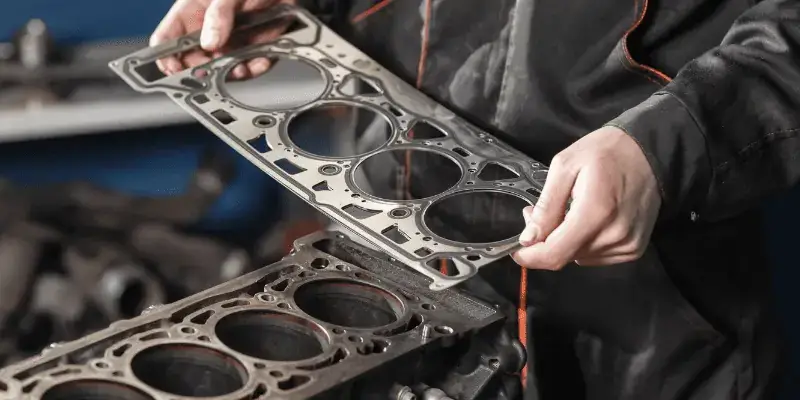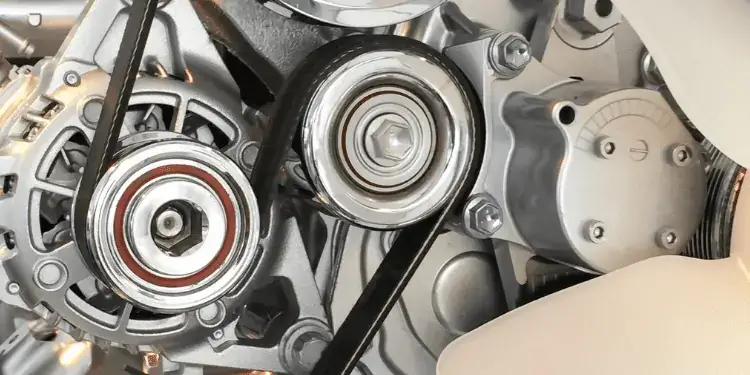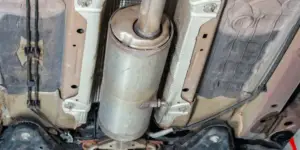You’ve done the right thing by topping up the coolant level, but still, your car is overheating. This can be a bit of a head-scratcher and also disconcerting.
Before we get into the details of what else could be causing this overheating after adding coolant, let’s briefly look at why coolant is so important.
Coolant, also known as an anti-freezing agent, is a mixture of Glycol and water that circulates inside the engine to keep it cool.
The 4 Reasons Your Car Is Still Overheating After Adding Coolant
Coolant Type, Dilution, Leaks, and Overfilling
Mixing one type of coolant with another can form sludge and make it difficult to circulate through the engine. Using the wrong coolant can cause overheating and decrease the engine’s performance.
Coolants conveniently come in different colors to alert you of their differences. They range from yellow, orange, green, and pink, each indicating a difference. The complete differences and color variations are beyond this article’s scope, so at the end of this article, I have included a link to a site that explains it in more detail.
The wrong engine coolant can gradually lead to corrosion and damage to the water pump, radiator, radiator hoses, and cylinder gasket. The coolant became thinner and thinner over time and will need more frequent changes.
Many visitors also read this related article: Low Coolant Symptoms – Full List of 10
The car coolant has a proper coolant-to-water ratio which is 50/50. Ensure that you use the right coolant and dilute it according to the instruction label on the bottle.
The coolant reservoir in the car usually needs to be filled below the maximum level. When running, the engine gets hot, and coolant expands in the reservoir.
Adding too much coolant to the reservoir tank will fill out any space needed for the hot coolant to expand.
As a result, pressure builds up inside the reservoir that causes the radiator cap to leak and expel the coolant from the overflow hose as it circulates back to the reservoir tank. In this way, the coolant level in the reservoir decreases and causes overheating.
Most cars don’t have drain hoses to carry out the overflowing coolant. This coolant splashes into the engine compartment and causes electrical damage when directly contacting the car wiring.
If you add water, then it will further dilute the coolant solution.
Bad Car Thermostat
The car thermostat plays a vital role in car engine cooling. It remains closed at the start of the engine and opens up when the optimum temperature reaches. This will allow the coolant to flow through the engine and keeps it cool.

Sometimes, some fault causes it to get stuck and remain closed. This will block the coolant flow, and the engine temperature will keep increasing continuously.
A faulty thermostat is one of the major causes of car overheating. The thermostat is usually found on the hose exiting the engine. These are cheap to replace.
If it feels cold, then hot water and coolant are not getting to the radiator to be cooled. This indicates the thermostat is stuck in the closed position.
Blown Head Gasket
The gasket provides the seal between the engine head and the block. The coolant flows inside a closed jacket that keeps the engine cool.
Coolant will burn off inside the engine if a blow occurs in the head gasket. It will affect the engine lubrication system.

To check the blow head gasket, you need to check the exhaust coming from the engine. If you see white smoke from the tailpipe, it might be that the engine gasket is blown. It will cause a low coolant level in the reservoir.
Due to the blow head gasket, exhaust gas also flows into the coolant. To check it, you must take your car to the workshop for the hydrocarbon test. This will let you know about the exhaust gases entering the coolant.
Loose Serpentine Belt
If you drive an old carburetor engine car in which a serpentine belt also drives the water pump, then a loose belt affects water circulation. At idle, the engine runs at low rpm; if the coolant does not circulate properly, the car can overheat.
However, the pump is powered by a crankshaft pulley or timing chain in the latest cars. So a loose serpentine belt will not cause overheating.

Due to the high reading on the temperature gauge, a check light appears on the dashboard, indicating engine overheating. Never ignore this, as a cooked engine can warp the block, causing a complete engine rebuild.
Are V belts the same as fan and alternator belts? Our new article explains all How Many Serpentine Belts Are In A Car?
If this happens, immediately turn off your engine, park the car in the shade, and allow the engine to cool.
Can you Add Coolant If Car is Hot?
Adding coolant to the hot engine can cause catastrophic failure of the engine. On rare occasions, cracks develop that reduce the life and performance of the engine.
Think like a glass put into hot water. Due to the temperature difference, crack develop in it that cause glass to break.
With the engine off, The best strategy is to allow your engine to cool for some time. Then add a little coolant to get hot, and add more until it is topped up completely.
Then run the engine so the coolant is fully adjusted with the engine temperature.
In normal conditions, an overheated engine will take around 30 minutes to cool down to its working temperature. The engine with the aluminum block cools down faster than the engine with cast iron.
Open the lid of the engine to speed up the cooling process. When the ambient temperature outside is low in the winter, it will take less time to cool compared to the summer season.
Why is Coolant Used Instead of Just Water?
Coolant has a higher heat absorption capacity as compared to water.
This way, it doesn’t boil and prevents the engine from overheating even at high temperatures.
Using water only will cause it to turn to steam and leak away through the radiator cap far more quickly than when coolant is added.
A more detailed explanation here: Should You Use Water Instead of Coolant? [ANSWERED]
Conclusion
The coolant in the car collects heat from the engine and exchanges it with the radiator. Most of the time, the wrong coolant is added, which does not mix up properly and causes poor circulation. Overfilling coolant can also increase the pressure and cause the radiator cap to explode.
The wrong coolant causes overheating and damages the water pump, radiator, and cooling fan – which has to work harder and longer.
Some radiators have an overflow reservoir tank that fills up when coolant pressure is high and withdraws from it when the pressure goes down. This helps in prevents from overspilling of the coolant.
Check the coolant level before pouring it into the tank – don’t overfill.
Always use the recommended coolant by the supplier in the right proportion to avoid overheating.
Resources:
Coolant Colors Meaning https://www.valvoline.com/en/engine-coolant/







![Is It Bad To Use Water Instead of Coolant? [ANSWERED] coolant-reservoir](https://carzaza.com/wp-content/uploads/2023/12/coolant-reservoir-300x140.png)





